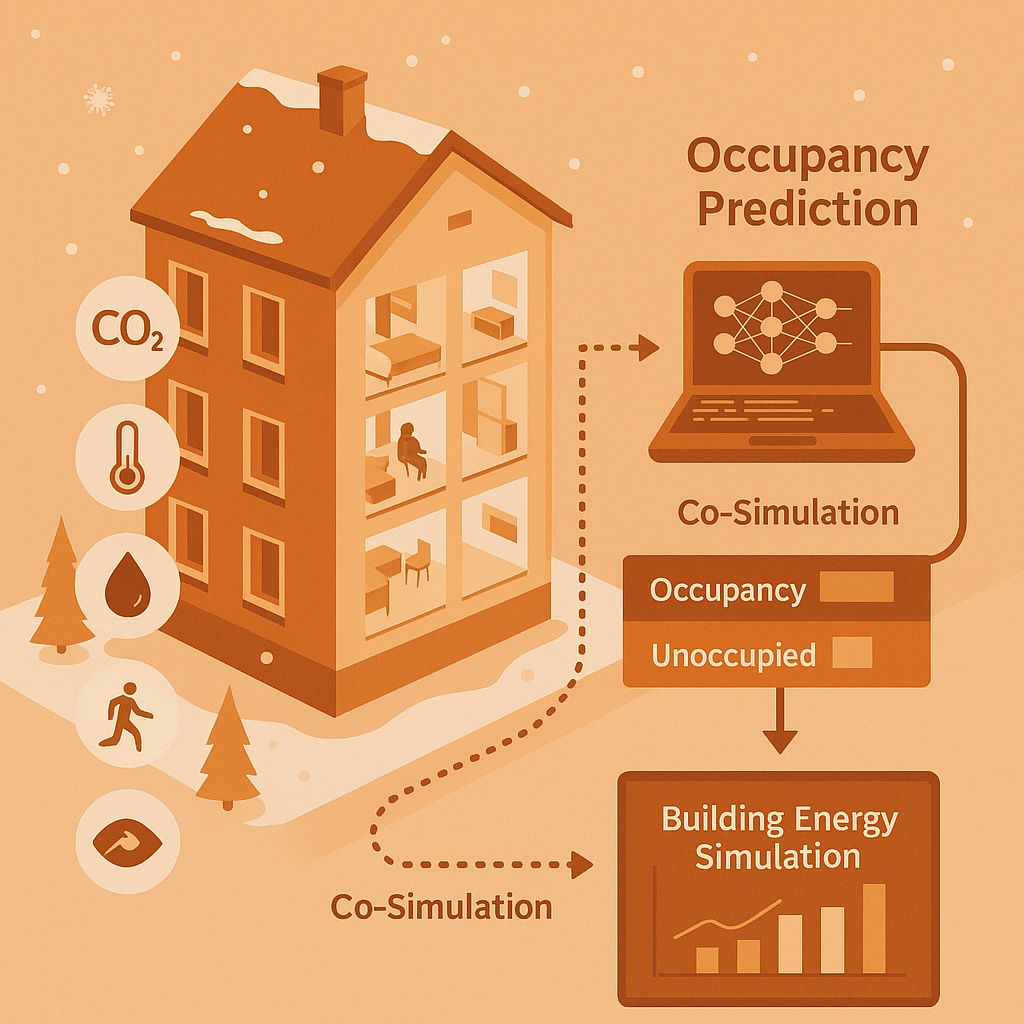Occupancy Detection of a Residential Building using Machine Learning and Integration with IDA ICE on Real-Time
Objective
This thesis develops a machine-learning approach to forecast occupancy in a residential building and integrates the resulting predictions into IDA-ICE, an indoor climate simulation tool, so that energy consumption and other building-related estimates are driven by the predicted occupancy profiles.
Background
Given that approximately 70% of Sweden’s building stock is residential, these buildings present strong potential for energy savings. Occupancy-aware recommendations are pivotal, yet challenging, because occupancy patterns are both individualized and time-varying. Leveraging environmental sensor data, machine learning and AI techniques can learn to predict apartment-level occupancy at specific time instants. Integrating these predictions into building-simulation platforms aligns energy-consumption forecasts with actual use, supporting more informed planning and operational decisions by building owners. Software platforms such as IDA-ICE enable co-simulation: a Python program predicts occupancy in real time and supplies these values as inputs to IDA-ICE, which simultaneously computes the resulting energy consumption.

Task description
The tasks in the thesis include a literature review on co-simulation and occupancy prediction. This is followed by analysing and processing the data from a residential building (KTH Live-In Lab) and using it to train a machine learning model (LSTM, random Forest or RNN) to forecast occupancy on a day-ahead and a week-ahead basis. This program needs to be integrated with an IDA-ICE model of the building for co-simulation. The python program should also implement a real-time clock to synchronize the co-simulation. Compare and contrast energy and other estimates from IDA-ICE with and without co-simulation.

Learning outcomes
-
Modelling: Train, tune, and evaluate ML models that predict apartment-level occupancy from environmental sensor data using robust time-series validation.
-
Integration: Implement a co-simulation workflow that feeds predicted occupancy into IDA-ICE with correct time steps, units, and fault-tolerant I/O.
-
Analysis: Quantify how predicted vs. default occupancy affects IDA-ICE energy outputs (e.g., heating, cooling, and ventilation) and assess sensitivity to prediction errors.
-
Ethics & Reproducibility: Demonstrate GDPR-aware data handling and deliver a reproducible pipeline with documented assumptions, configurations, and code.
Prerequisites
-
Python programming
-
Basic knowledge of IDA-ICE (recommended)
Research Area
-
Energy efficiency
-
Digitalization
-
Machine Learning
-
Sustainability in buildings
Duration
The thesis is expected to begin in January 2026 and go on for 6 months.
How to apply
Interested candidates can send an email with a cover letter motivating their interest and approach on the thesis along with a CV to Supriya Mini Soman (contact below)
Supervisor/Examiner
- Examiner: Farzin Golzar (fargo@kth.se)
